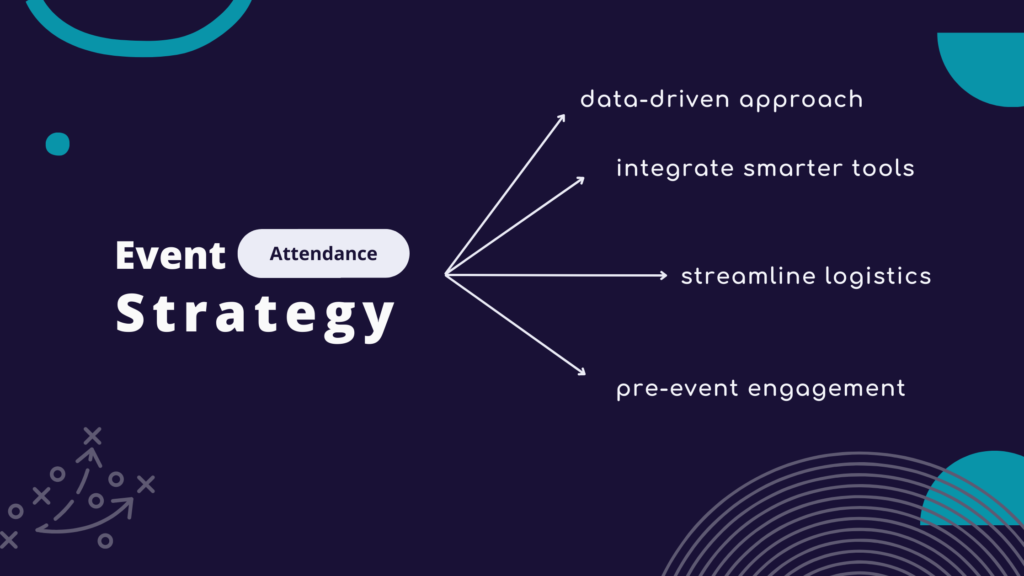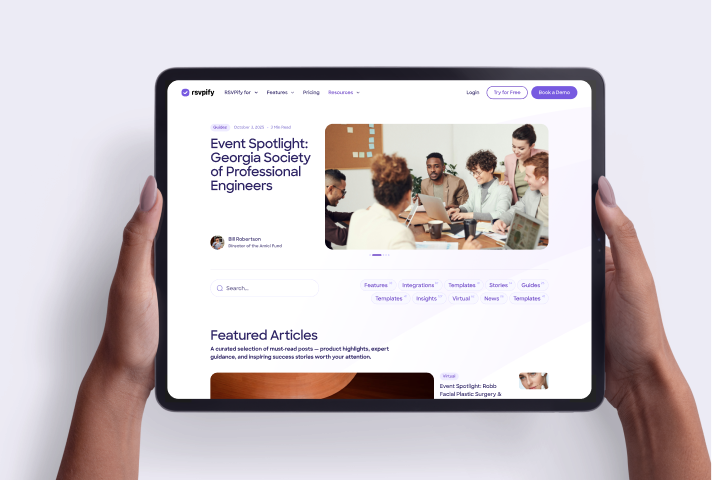Organizations and individuals plan events for all kinds of reasons. Whether you’re looking to raise money in support of your nonprofit’s mission, boost awareness about your favorite cause, or recruit more members to your club or community group, a well-planned event is always a smart choice.
Every nonprofit or community event is inherently different, but what’s the one shared element required for the success of any event? Attendance.
Online fundraising methods are more popular and accessible (for organizations and individuals) than ever before. However, on-the-ground engagement with supporters and community members is still the best way to make a lasting impression
Fundraising events are some of the most diverse and logistically-complex projects that nonprofits handle, and tech tools and platforms are often the keys to streamlining both the planning and execution of events.
Smarter tech strategies will even help to boost attendance at fundraising events when employed alongside the right tools and techniques! Let’s walk through a few tips for using technology to increase attendance at your next event:
Note: While this guide specifically revolves around helping nonprofit organizations build out their toolkits and develop new tech strategies, these tips can apply to any event planning project. A small group or individual might not have access to the same kinds of resources, but the underlying concepts are useful in any context.
Let’s get started.

Today, data-driven strategies for fundraising, event planning, and more are the norm for nonprofit organizations. Data, specifically the information your past events and campaigns have generated, should inform every decision you make in the lead-up to your event.
After all, events can be serious investments of time and energy for organizations of any size. By using data at all stages of the planning process, you can ensure that your decisions are the most likely to generate the kinds of responses you want from guests or donors. Consider these steps for getting started with data-driven event planning:
Before settling on any specifics for your event, it’s important to start by reviewing the performance of your past events. Ask yourself and your team questions like:
Nonprofit organizations that fully rely on donated support keep track of a number of different metrics to gauge the success of their campaigns. Explore this guide to donor analytics for a crash course on how to track and use your historical data to constantly refine your strategies.
This next step involves more thoroughly interpreting your historical data. Depending on your organization’s mission and past experiences, you might already have an idea of what your most and least successful events were.
However, at this stage, it’s important to identify why an event was or wasn’t successful. That is, what specific element of the event strategy excelled or underperformed? In this case, you’d probably want to look at attendance data.
What were your most well-attended and poorly-attended events? What types of events were they? If they were fundraising events, how much did they raise? Find patterns and relationships whenever possible, and then apply them to the specific goals of your upcoming event.
To keep your strategies focused, your event should have only one or two core goals. For example, nonprofit fundraising event strategies typically revolve around metrics like:
For instance, if your next event is intended to help you reach new audiences and expand your network of support, look for your past events that were very well-attended and identify commonalities between their marketing techniques. Then, work those techniques into your strategies for promoting your next event.
These steps make up a fairly general best practice for event planning, so exactly how you incorporate it into your process will depend on the specifics of your project.
However, every organization, big or small, should take the opportunity to improve their data management strategies when possible. The benefits of keeping close records of your campaigns and events far outweigh any one-time investments in new tools or processes.
This tip works hand-in-hand with the first. Incorporating smarter tools in your organization’s event planning process can go a very long way to improve your ability to refine your strategies and attract crowds.
This will look different for different types and sizes of organizations. For instance:
The main idea is to take the opportunity to build out or upgrade your toolkit when it’s time to begin planning your next major event, whether that’s a community potluck or a glamorous gala. Working with the best tools allows you to gather, record, and analyze more data from your interactions with supporters, which leads to smarter strategy and higher attendance.
Another way to improve engagement and attendance with technology? Look for new ways to streamline logistics during the event.
There are a few ways you might do this. First, look for event-specific software that can help with managing it from start to finish. For nonprofits, the classic example is the auction. With unique logistical requirements unlike other types of fundraising events, silent and live auctions typically need special planning and management tools to be truly successful.
Explore this silent auction planning guide for more context on the kinds of features that event-specific software should include. Engaging platforms can boost attendance and engagement by creating more flexible ways for guests to get involved. For instance, many auction tools allow guests to bid from their mobile phones.
You might also use technology to streamline your event’s logistics by focusing on specific elements of your guests’ experience. Check-in is usually what comes to mind. There are plenty of options available for event check-in systems, but the best idea is usually to look for platforms that offer additional features, as well.
An ideal web-based event planning platform will feature a wide suite of features that can be helpful for any type of event, simplifying logistics in a way that allows your team to stay focused on promotions and provide a more positive experience during the event itself. However, the main idea to remember while building out your event toolkit is that technology should play a role both before and during your events.
Taking the time to build out your organization’s tech and data infrastructure will boost your event planning efforts and increase attendance in the long run, but what about more direct and immediate strategies?
Focus on engaging your audience and registered guests in the period leading up to your event. This can be an extremely effective way to attract new attendees and boost energy before the big day. For example, you might:
The main idea for this tip is to incorporate pre-event techniques into your engagement strategies. Keeping registered guests excited to attend helps to ensure both that they’ll show up for the event and that they’ll get others interested in coming, too.
While events are some of the most effective ways to raise funds and connect with your community, securing plenty of attendees is always a challenge. Try incorporating a few smarter tech strategies into your event planning process and focusing on building out your toolkit. You’ll refine your attendee engagement strategy and begin seeing improved attendance in no time!
About the Author
Get the latest product updates, event planning tips, and industry insights — straight to your inbox.
You can unsubscribe at any time. Your email will only be used to send RSVPify updates and will never be shared.
